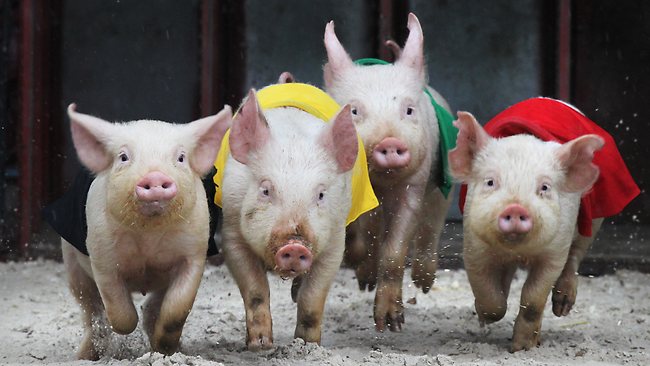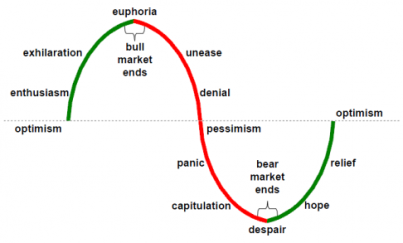Stock markets have their own mythology. You often hear a TV host say that
the bears are in charge or that the bulls have taken over. Analysts
like to say they are "bullish" or "bearish" on the market or on a
particular stock. This has become so common that few people ever stop to
explain what these terms mean. However, their meanings are rooted in history.
Bull Market

In
a bull market, stocks show a tendency to go up in price over a period
of time. This period can be weeks, months or years. It's not an exact
term. Instead, it refers more to confident sentiment among investors. In
practice, it means the market has more buyers than sellers.
When demand exceeds supply, prices rise. Bull markets are most common when the economy is growing, unemployment is low and inflation is somewhat tame. When someone says he is "bullish" on a single stock, he simply means he expects it to rise in price.
Bear Market

When
you hear someone say we're in a bear market, she means stocks are
headed down, in her estimation. This means sellers outnumber buyers.
A bear market can go on for years. If stocks go down for just a few days
or weeks, the movement is usually called a "pullback" or a
"correction."
Once stocks drop 20-to-30 percent in value, you may hear speculation that it is a bear market, meaning it could drop a lot further before it comes back up. Some investors actually make money in a bear market by buying stocks at cheaper and cheaper prices in anticipation of them rising again.
Pigs

A saying on Wall Street goes, "Bulls make money and bears make money. Pigs get slaughtered." The idea is that you shouldn't get too greedy. Even if someone is devoutly bullish, he takes calculated risks, not wild chances. Similarly, a bear is always ready to be proven wrong. Anyone who thinks he knows for sure where the market is headed can get too aggressive and lose money.
The Source of the Names
Miners
used to actually pit bears and bulls together in a fighting ring. In
the United States, this was common during the Gold Rush era in
California.
This bloody sport eventually was outlawed, but the symbolic strength of the two animals translated into modern Wall Street usage. As for the "up" and "down" parts, some claim this is a reference to the bull's tendency to slash upward and the bear's tendency to strike downward. The pigs are a modern addition by some unknown wit.
What It Feels Like




